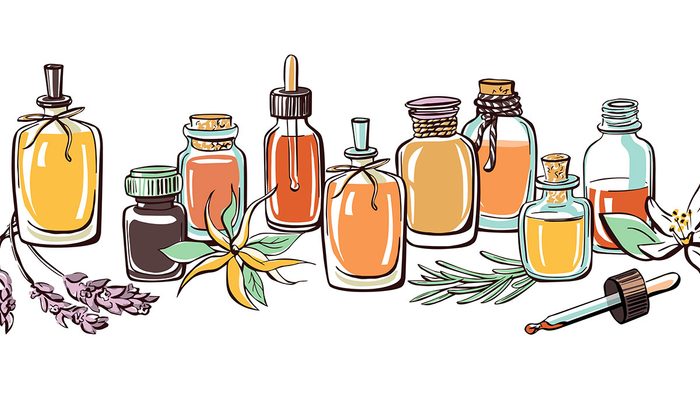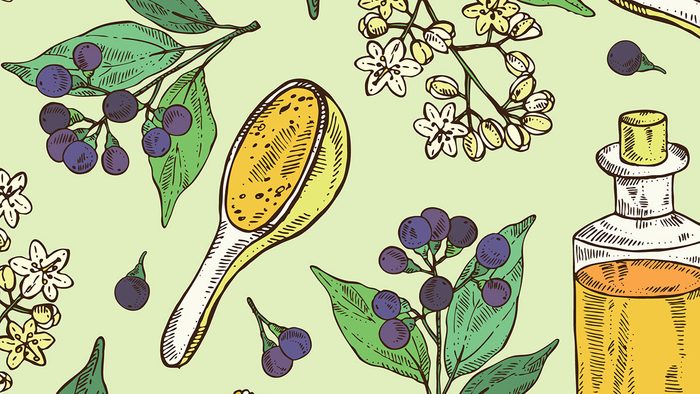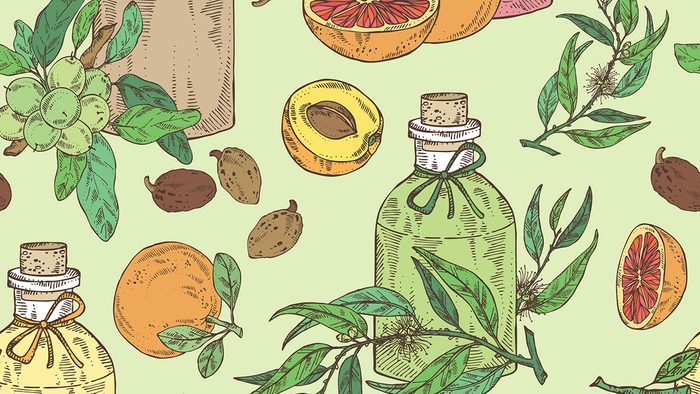
It’s time to make essential oils a priority in your medicine cabinet
A few years ago, if you casually listed lavender essential oil as your preferred sleep aid, you probably would have received skeptical stares reserved for talk of crystals and chakras. But it’s 2018 and essential oils are becoming more popular across Canada. However, the million-dollar question remains: Do essential oils work?
“I’ve always been interested in essential oils and the traditional healing power of plants in different cultures,” says Dr. Roohi Qureshi, a Toronto-based doctor and founder of the natural skincare brand Leaves of Trees. “A lot of our pharmacological treatments today actually have their origins in different plants.” She cites the likes of aspirin (originally derived from willow bark) and digitalis (which comes from the foxglove plant), to name a few. “It makes sense that essential oils would have healing properties,” says Dr. Qureshi.
Dr. Roohi Qureshi on launching her all-natural line, Leaves of Trees.
Even the original 1886 recipe for Coca-Cola included essential oils like orange, lemon, nutmeg, cinnamon, coriander and neroli. They’ve been steadily popping up in beauty and skincare products, too. They’re no longer strangers to the mainstream, but why the sudden leap from crunchy health-food store aisle to swanky mall real estate?

The benefits of essential oils are huge
One of the reasons why essential oils may soon be ubiquitous in your medicine cabinet and on your skincare shelf is because of our sparkly new sense of environmental awareness. “People are seeing the difference between chemicals — with their effects on the environment and the body — and natural remedies,” says Isabelle Pacchioni, co-founder of the French essential oil and natural product line Puressentiel. “We’re at a point where we need to change our way of thinking.”
These little plants can have a big effect on your health, but how?
Make no mistake, essential oils are entirely different from the vegetable oil in your pantry. This oil — the volatile oil that’s found within that offers extra benefits and strength — is but one component of the plant that has been extracted with steam distillation. The process goes like this: Freshly picked plants are placed over boiling water so that the steam pulls the oils out. The rising steam is contained in a vessel and moved along a tube, where it’s quickly cooled so that it condenses back into water. The water and essential oil don’t mix, making it easy to retrieve the oil. This leaves us with a highly concentrated oil to use for aromatherapy, the therapeutic use of plant-derived, aromatic essential oils to promote physical and mental wellness.
Next, the essential oil needs to get from the vial to the body, but it’s not as simple as drinking it (which, by the way, you should never do). Julie Clark, a certified aromatherapist and founder of the Toronto skincare company Province Apothecary, says that essential oils can be absorbed into your body in a few different ways. The first way is inhalation, entering your system through your mucous membrane and affecting your nervous system from there.
Most aromatherapists also recommend putting essential oils in your bath because they can enter your system that way (and it doesn’t sound like an entirely unpleasant experience). They can also be applied topically, penetrating the skin to enter the bloodstream, similar to a birth control patch (Clark recommends putting them at the back of your hairline).

Once the essential oils are in your body, the oils do all the work
“Essential oils affect your parasympathetic nervous system (your unconscious nervous system), so you don’t have to do anything,” says Clark. “Once they get in your bloodstream, they will affect you, just like how drinking camomile tea has tangible effects.”
There’s a cocktail of oils for everything from headaches and bug bites to stress and anxiety. But why opt for oils over, say, ibuprofen? It’s a whole body approach. “The properties of the oil are targeted, but they also have other benefits,” says Clark. “For instance, if I burned myself, I could use lavender oil to calm the burn, repair the skin, disinfect the area and stimulate cellular regrowth, so it’s working on a topical level. But on an internal level, I’ve also absorbed the lavender, which is calming, comforting, analgesic and antispasmodic. I might tense up because of the burn, but the properties of lavender will help me release tension in my body, calm my nervous system and relax.” This body-mind connection wouldn’t exist if she had just applied a conventional first-aid ointment, but it would get the job done topically. “Every essential oil is a multi-tasker,” says Clark.
Dr. Qureshi agrees. “For some people, using oils for relief can be a bit of a ritual,” she says. “Simply taking the time to stop and inhale the scent can make people more conscious. For pain, if you’re using something like ibuprofen, it first has to be digested, then absorbed into your bloodstream to relieve your sore back or shoulder.” But oils and conventional medicine are by no means meant to be a dichotomy and can be used in conjunction with each other. “When I get a headache, the first thing I reach for is peppermint oil because I get relief in one minute, but I still take a pill, too,” says Dr. Qureshi.
Even though these oils are natural, research is still recommended before making your own concoction. Cumin oil, for example, is safe in food but can cause blistering on the skin. And, though Clark recommends marjoram for sore muscles, she cautions against using it every day. “It actually kills your sex drive and is extremely numbing, so I wouldn’t put it in a cream,” she says. But Dr. Qureshi says that there is less of a chance of adverse effects when essential oils are used properly.
The best food-inspired skincare products to give you a gorgeous glow.

It’s important to always be mindful when using essential oils
Dr. Qureshi advises pregnant women to be especially mindful of safety: Certain oils derived from celery and parsley and essential oils of Spanish sage, pennyroyal and rue contain compounds that can put your pregnancy at risk. There’s also sufficient evidence to suggest that oils like cinnamon bark, clove, carrot seed and chaste tree are unsafe to use during pregnancy. Moms should take caution, too: “Children have much thinner, more delicate skin than adults and tend to be extremely sensitive to their potency,” says Dr. Qureshi. She says that oils should never be given internally to children or used undiluted on the skin. If used at all, they should always be diluted twice as much as they would for adults. Some oils, such as orange, lemon, lavender, camomile and frankincense, are generally considered safe for use on children (when diluted), but you should still do a skin test. And don’t forget to keep essential oils out of reach of children. Oils like wintergreen can be fatal if swallowed.
Adults who aren’t pregnant need to be careful, too. For one, you should never take essential oils internally. Also, don’t use them undiluted on your skin: They can lead to problems ranging from mild irritation to blistering rashes (or even permanent loss of skin pigmentation). Always dilute your essential oil with a carrier oil like jojoba, coconut or almond oil. The general rule is to dilute the essential oil in a carrier oil (three to five drops of essential oil per teaspoon of carrier oil). You can perform a patch test to check for irritation before you proceed. If you react, you can have your doctor determine specifically what you’re allergic to so that you can avoid it in the future.
This is how Khloe Kardashian is keeping her “revenge body” during pregnancy.
Essential oils are worth trying if you’re looking to innovate the way you relieve what ails you. “When there is very little potential harm, try using them,” says Clark. “What’s the downside if you feel that they help you?”
